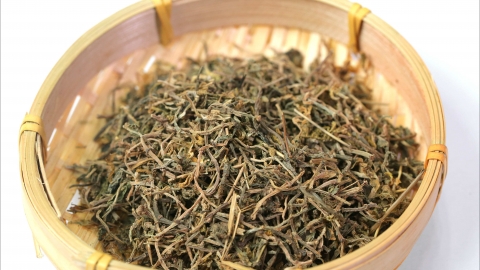What should be noted when taking Sedum sarmentosum (垂盆草)?
When consuming Sedum sarmentosum (commonly known as "Chui Pen Cao"), one should generally pay attention to the suitable population, contraindications for combination with other substances, methods of consumption, dosage, and duration of use. A detailed analysis is as follows:

1. Suitable Population: Sedum sarmentosum has a cold nature and may exacerbate internal coldness in individuals with deficiency-cold syndromes of the spleen and stomach, potentially causing discomfort symptoms such as abdominal pain and diarrhea. People with weak constitutions, especially those who have recently recovered from a prolonged illness, often have weak gastrointestinal functions, and consuming Sedum sarmentosum may lead to digestive disturbances. Therefore, these two groups should avoid its consumption.
2. Contraindications for Combination: Sedum sarmentosum may interact with certain medications, affecting drug efficacy or causing adverse reactions. For example, when used together with tonic Chinese herbs, it may hinder the absorption of the tonifying herbs, thereby reducing their beneficial effects. When combined with antibiotics, it might interfere with drug metabolism and weaken the therapeutic effects of antibiotics. Therefore, caution should be exercised when combining it with other drugs.
3. Methods of Consumption: Consuming Sedum sarmentosum without proper preparation may result in residual harmful microorganisms and impurities, which could affect health. Eating it raw may also irritate the mouth and gastrointestinal tract due to its unique taste and composition. It should be processed using appropriate methods such as washing, steaming, boiling, or decocting to reduce risks and better exert its beneficial effects.
4. Dosage: Although Sedum sarmentosum has certain medicinal value, excessive consumption can burden the body. Overconsumption may increase the metabolic burden on the liver and kidneys and could lead to toxic reactions such as nausea and vomiting. The scientifically recommended dosage should be strictly followed to avoid blindly increasing the dose in pursuit of enhanced effects.
5. Duration of Use: Continuous long-term consumption of Sedum sarmentosum may lead to tolerance, reducing its original effectiveness. Prolonged intake may also cause imbalances in body components and affect normal physiological functions. After a period of use, it is advisable to discontinue use for a while and observe the body's response, avoiding uncontrolled long-term consumption.
Before consuming Sedum sarmentosum, individuals should fully understand their own health condition, seek professional advice, appropriately choose the method of consumption, control the dosage and duration, and carefully consider drug combinations to ensure safe and healthy consumption.






